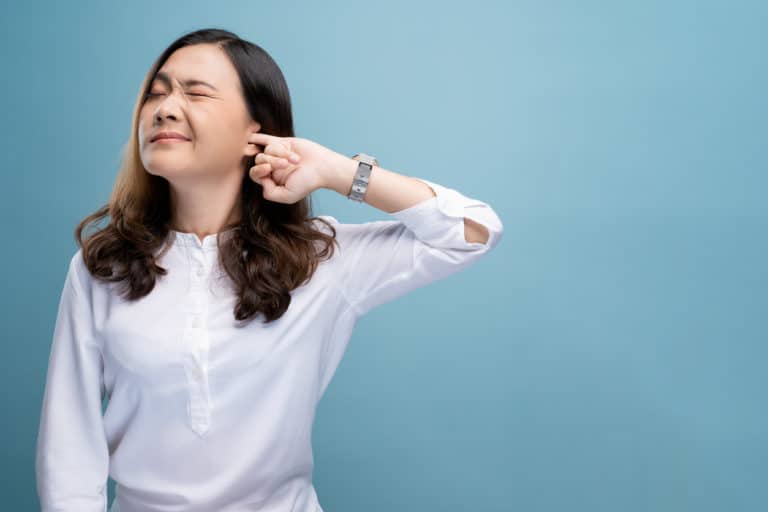Search for topics or resources
Enter your search below and hit enter or click the search icon.

Earwax is a naturally occurring substance that lubricates the ear canals to keep them from becoming dry and itchy, and also protects the ear by trapping bacteria and debris. Earwax works itself out of the ears through natural jaw movements when talking and chewing. Many people think that earwax is dirty or unsightly and try to remove it, but removal is not necessary unless the earwax becomes impacted.

If you have an earwax impaction, you may experience…
People who produce excess earwax or wear hearing aids/earplugs regularly are most at risk for impacted earwax.
You should never stick a cotton swab, hair pin or other pointy object in the ear in an attempt to remove earwax. If you do, you risk pushing it further into the ear canal, worsening the obstruction, or rupturing your eardrum. Do not put anything smaller than your index finger into your ear.
If you have impacted earwax, there are ways to safely remove it at home.
Over-the-counter eardrops can be purchased to soften earwax so it can work its way out more easily. Follow the directions on the box.
You can also try other substances in your house to soften earwax, including mineral oil, baby oil, glycerin, hydrogen peroxide or saline. Place two to three drops in the ears, wait one to two minutes, then tilt your head so the drops drain out.
If earwax softeners don’t provide relief, you can run a washcloth under warm water and wipe the ear canal using your index finger.
The easiest way to irrigate your ears is to stand in the shower with your head tilted so water runs into the ear canal. Make sure you tilt your head afterward so the water can drain out.
Alternatively, you can irrigate the ears using a bulb syringe and saline solution. Make sure to use warm water, not hot or cold, to avoid dizziness or burns.
If none of these at-home methods works to remove impacted earwax, schedule an appointment with an audiologist or ENT physician who has the tools and expertise to remove earwax safely and effectively.
For more information or to schedule an appointment, call the experts at Houston Hearing Center.
Lorem ipsum dolor sit amet, consectetur adipiscing elit, sed do eiusmod tempor incididunt ut labore et dolore magna aliqua. Sed risus ultricies tristique nulla aliquet enim.
Topics: